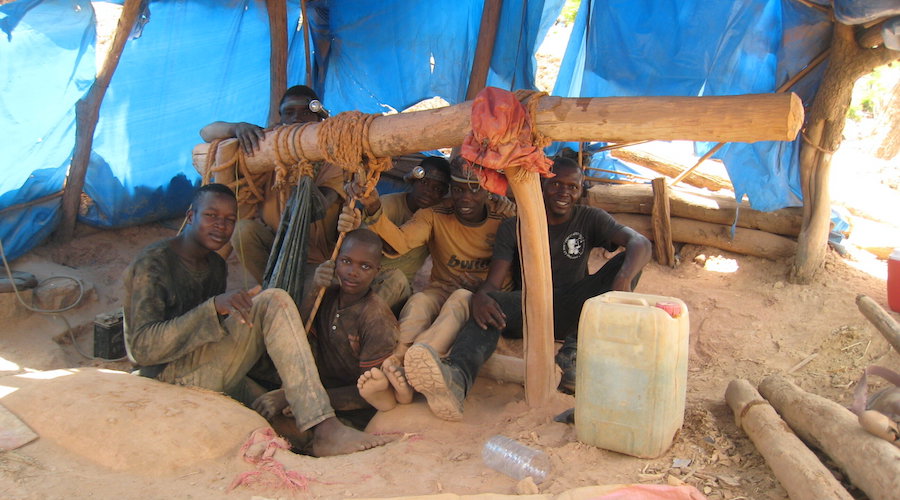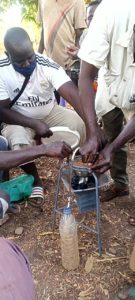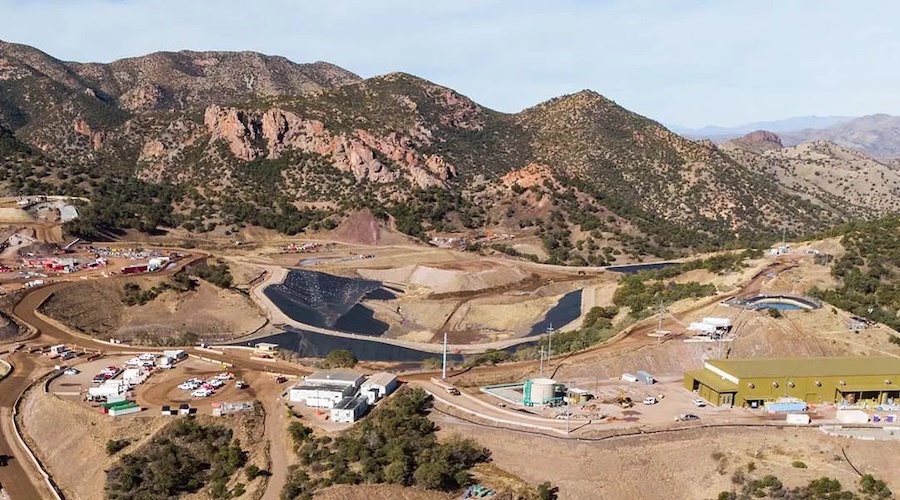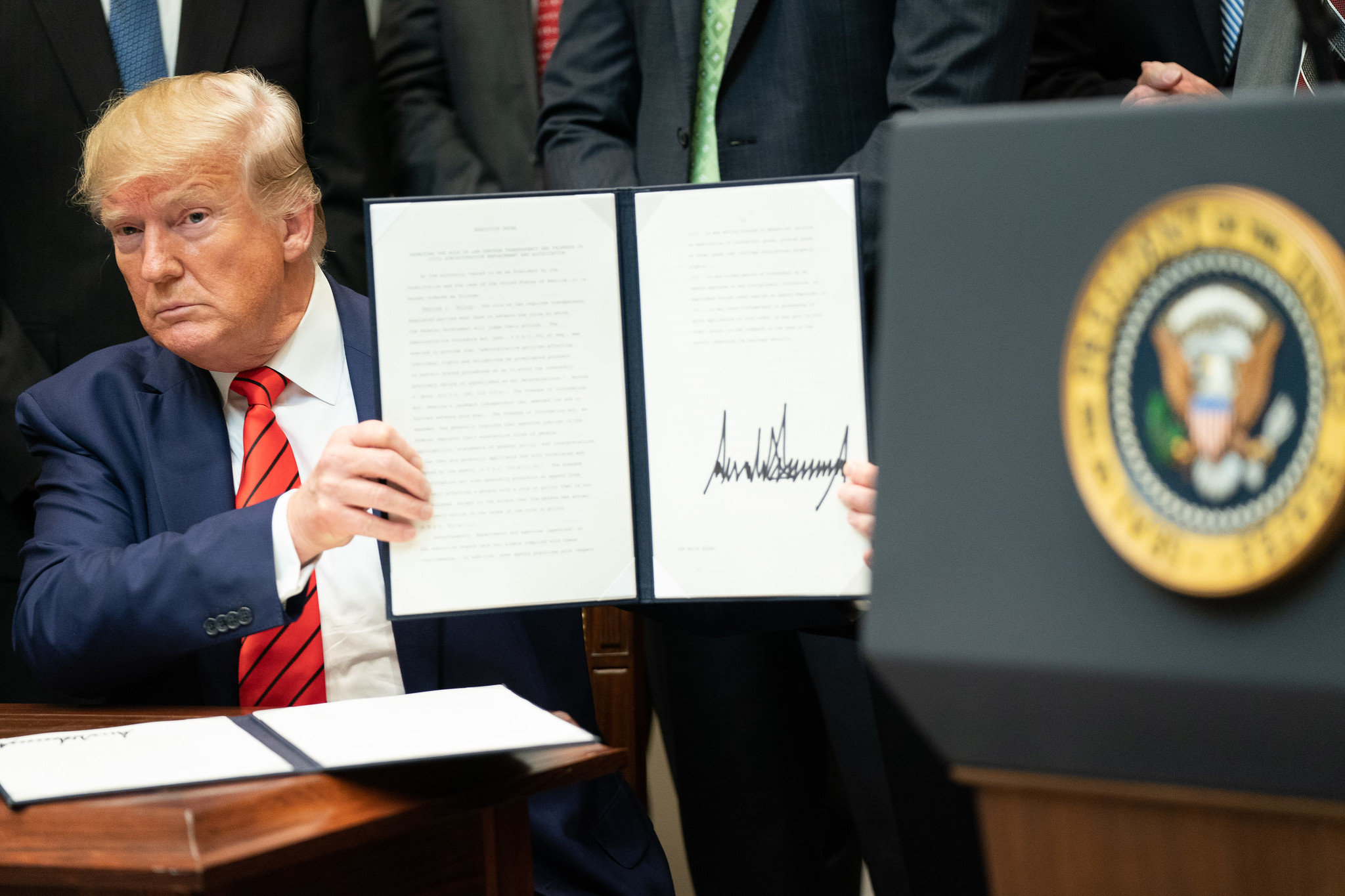New approach aims to detoxify artisanal gold mining

A group of researchers has developed a two-pillar-based approach to detoxify artisanal gold extraction with the goal of helping miners keep their livelihoods while reducing associated health risks.
Knowing that approaches focusing on getting rid of mercury have not worked in the past, a team from Michigan State University, Colorado State University, the Peace Corps and Duke University started talking with miners in Senegal to identify emission-reducing opportunities that would stick. Using what they learned, the team developed a new way of doing things.
The first pillar in the approach was an educational program, delivered by local community members about the dangers of mercury, the symptoms of exposure and ways miners could protect themselves.
The instructors also shared information about the second pillar – devices known as retorts.
Retorts are metal enclosures that allow miners to burn the mercury off from gold without releasing vapours into the atmosphere. Instead, the vapours are collected and exhausted into a bucket of water, where the mercury condenses and can be retrieved.

Local metalworkers built the retorts for the study using readily available materials and a design provided by the research team that also incorporated tweaks from the miners.
The team worked with nine mining communities to measure the effects of these interventions. Three of the communities received both the education and retorts, three received education only and three provided a control group—that is, they received neither the education nor the retorts.
This enabled the team to conclusively demonstrate that providing education and retorts worked. Miners were more aware of the dangers of mercury and how they could limit their exposure. They used mercury less and, when they did, they used retorts more.
“These effects permeated into the control villages,” lead researcher Jacqueline ‘Jackie’ Gerson said in a media statement. “There was this sort of social spillover where people were sharing the education and the retorts.”
Based on the project’s success in Senegal, Gerson believes the approach could be extended to mining operations in other countries to further curb emissions. But she stressed that it has to be the entire approach, not just the solutions they found in Senegal.
“Miners have to be involved from the beginning to identify specific solutions that will work in their unique physical and social environments,” Gerson said.
In her view, artisanal mining in Senegal is different from artisanal mining in Peru so the specific techniques that worked in one place may not work in the other. Still, the approach of working with miners and their neighbours to find trustworthy solutions will translate.
“We have to collaborate with the people who are living and working in these places if we’re going to be successful,” Gerson said.
Where do mercury emissions go?
Gerson, who works at Michigan State University, together with Heidi Hausermann at Colorado State University and Richard Amankwah, vice chancellor at the University of Mines and Technology in Ghana, recently received a grant to answer large, looming questions about where mercury emissions from artisanal and small scale gold mining (ASGM) go and how and whether these mercury emissions can enter the food web through crops.
This knowledge could help create policies and practices to better protect miners, their neighbours and nearby communities.
“Locally and regionally, we don’t know where a lot of that mercury goes once it’s emitted,” Gerson said. “The question is whether crops are taking it up in their leaves or through their roots, and it could be that they don’t. That’d be great. In fact, that’s what we hope, but we don’t know.”
To date, most research on mercury emissions has focused on what happens to it in aquatic environments, which makes sense because microbes living in ecosystems without a lot of oxygen—underwater, for example—are very efficient at converting mercury into a compound called methylmercury, which is the form of mercury that causes neurotoxic impacts.
In aquatic environments, then, methylmercury gets in on the ground floor of the food chain. The chemical accumulates in larger fish and sea life preying on smaller organisms, which is why certain seafoods present mercury concerns for humans.
With an abundance of oxygen above water, however, research on the fate of methylmercury on land has been scant.
“We know the terrestrial conversion of mercury to methylmercury is less efficient, but there’s a lot of mercury entering the terrestrial ecosystems near artisanal gold mining,” Gerson said. “So, it is a concern.”
Underscoring that concern is the fact that, during earlier work in Peru, Gerson observed evidence that songbirds in forests near ASGM activity had been exposed to mercury, likely through their diet of fruit and bugs.
Now, with the grant, Gerson and her teammates will track how mercury moves through terrestrial environments and where it ultimately ends up to paint a much more comprehensive picture of its effect on public health.
More News
South32 breaks ground on remote operating center at Hermosa project in Arizona
April 24, 2025 | 04:20 pm
{{ commodity.name }}
{{ post.title }}
{{ post.date }}



2 Comments
rob dubeck
Auxico Resources patent pending process addresses global extractive industry issues including mercury pollution created by artisanal gold mining, as the UAEx does not use cyanide or mercury, and operates in a closed-loop system.
The objective of the UN Minamata Convention, adopted in October 2013, is the elimination of mercury in artisanal mining
https://www.newswire.ca/news-releases/central-america-nickel-announces-filing-of-patent-application-on-ultrasound-assisted-gold-and-silver-extraction-842788902.html
Farai Richmond Marume
Wonderful work